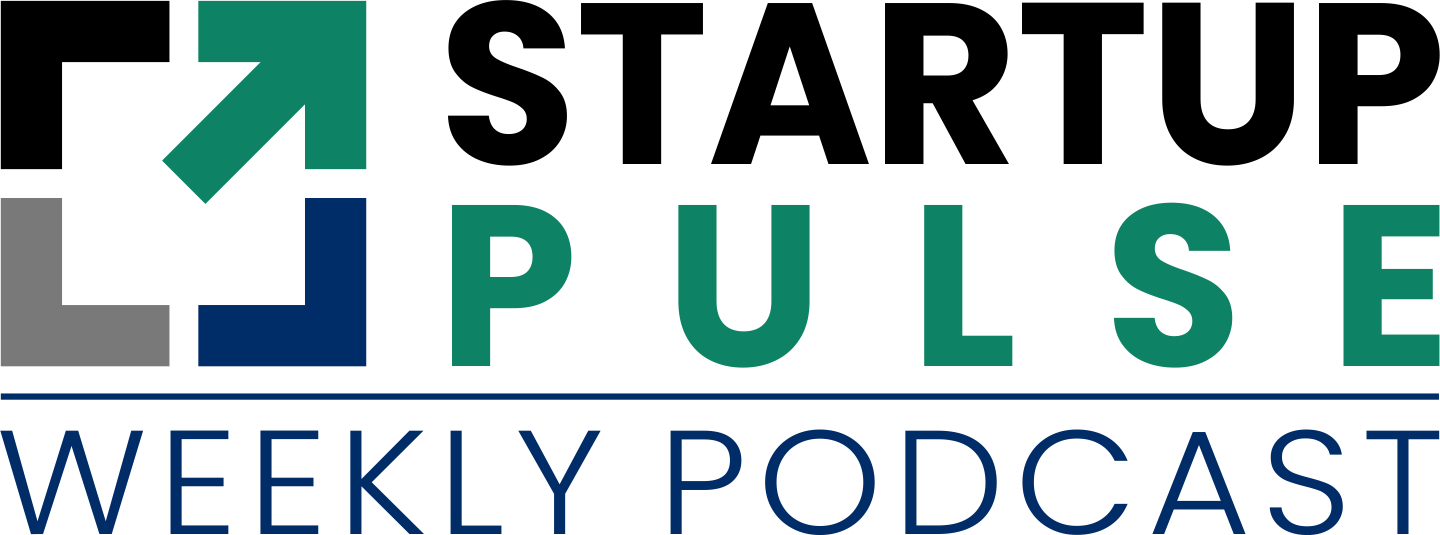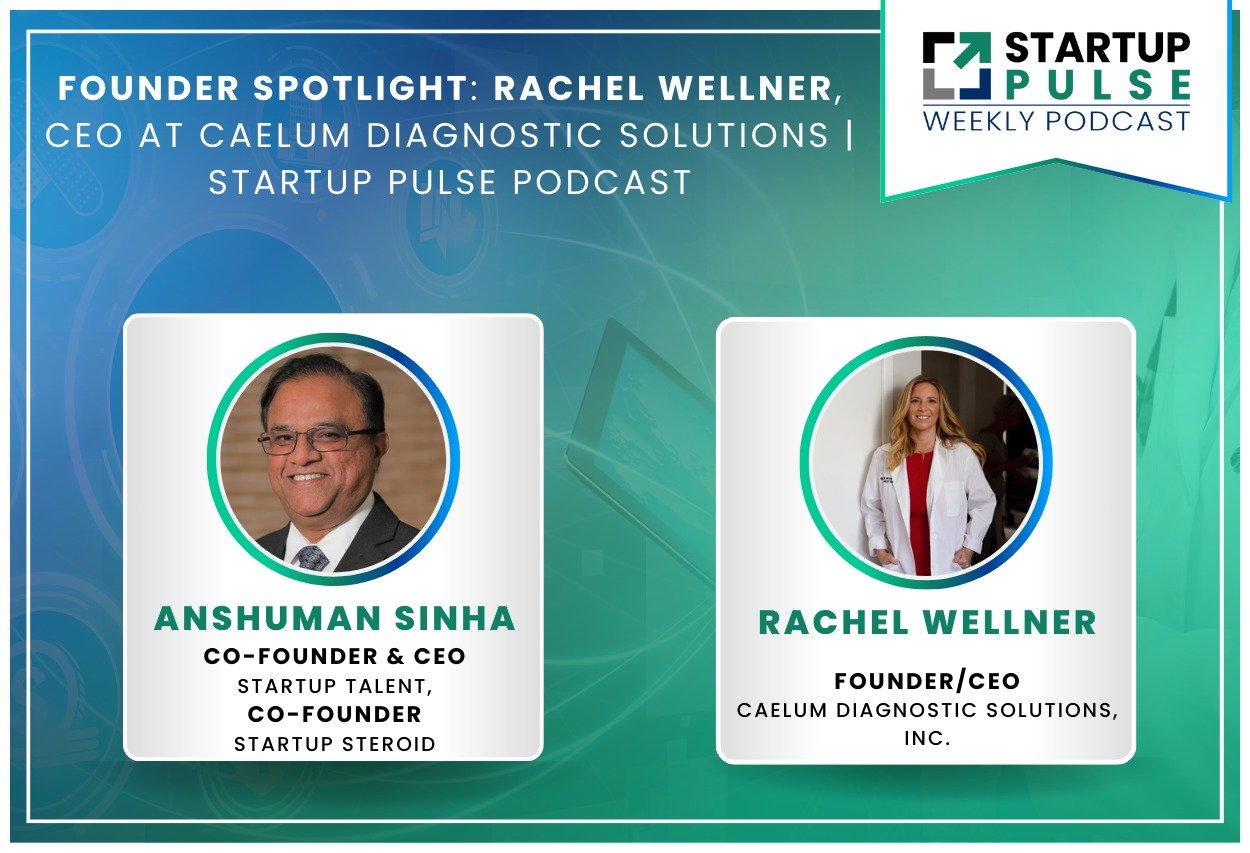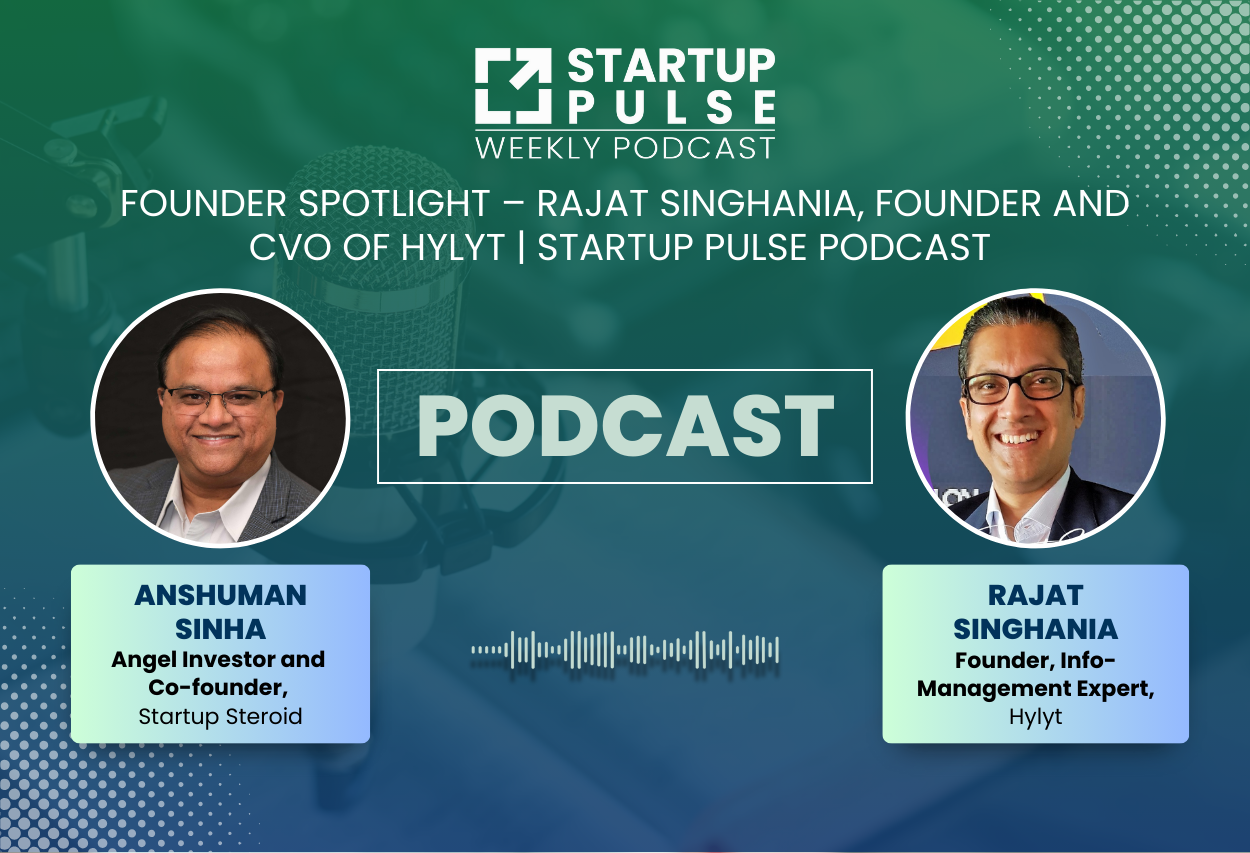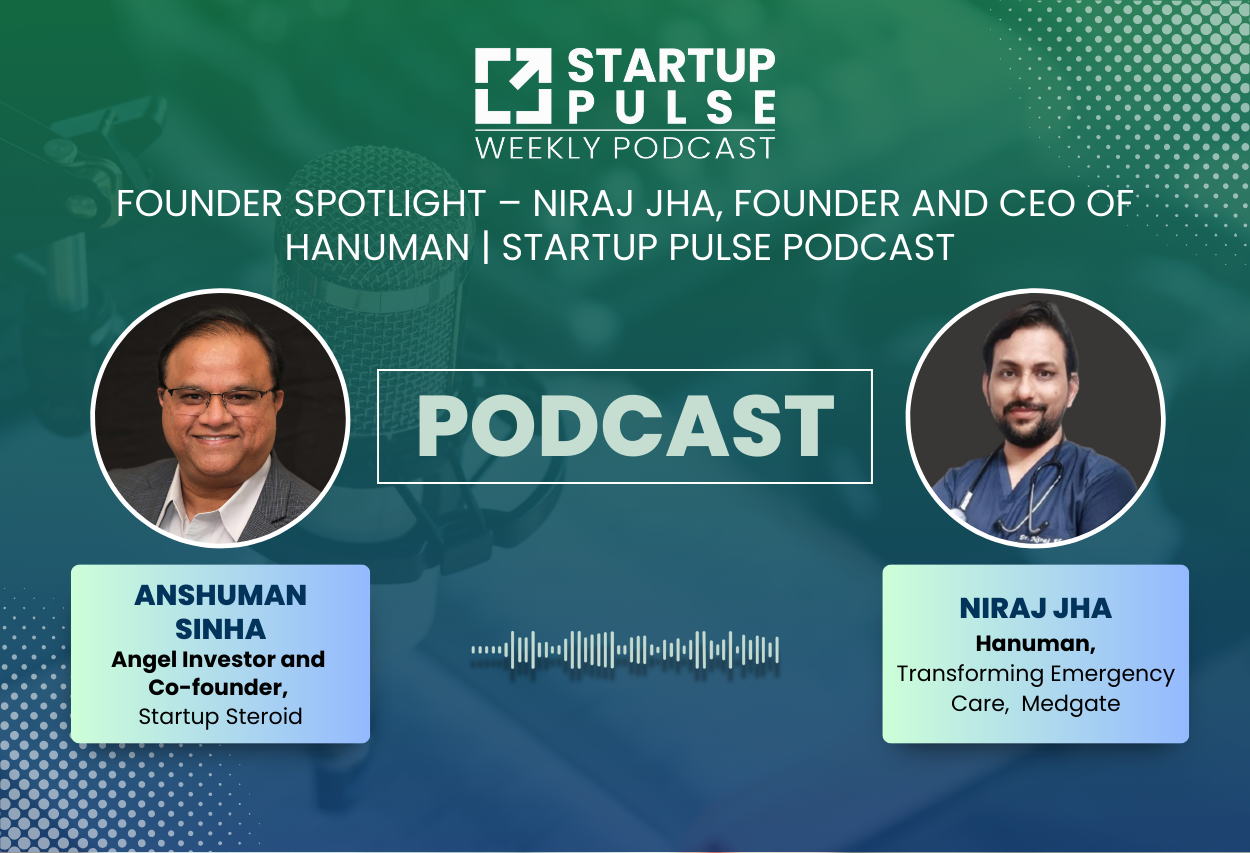The latest episode of the podcast hosted by Anshuman Sinha, Co-founder and CEO of Startup Talent and Co-founder of Startup Steroid, explores the fascinating realm of medical diagnostics.
Dr. Rachel Wellner, Founder and CEO of Caelum Diagnostic Solutions, Inc., takes center stage as she shares insights about Cealum Diagnostic Solution, her vision for the future, and the transformative potential of cutting-edge diagnostic technologies.
Join us as we unravel the healthcare sector’s innovation and entrepreneurship journey.
“Everyone, have you heard of Digital Biopsy Diagnostic Company? If not, we will bring you Dr. Rachel Wellner, MD, MPH, FACS, today. She is a board-certified breast surgical oncologist and the founder and CEO of Cealum Diagnostic Solution, Inc.,” said Anshuman Sinha as he introduced Dr. Rachel on the Startup Pulse Podcast this week.
Dr. Rachel Wellner thanked Anshuman and described the pivotal moment when she realized the potential for innovation in cancer diagnostics. It struck her during a research meeting where she encountered FLIM (Fluorescence Lifetime Imaging Microscopy) technology, which provided a unique perspective on cancer cells’ metabolism.
This encounter ignited her passion for creating a technology that could revolutionize cancer diagnosis. She aimed for quick, accurate results that could significantly reduce patient anxiety and waiting times. She outlines the logical steps she took after that, from assembling a multidisciplinary team to developing patents, prototyping, fundraising, and navigating regulatory pathways.
Here’s the Full Link to This Podcast Episode
Here are some key excerpts from the podcast:
Anshuman Sinha: This podcast will be broadcast and viewed by many people. If somebody wants to go into a medical profession or chooses a career as an oncologist surgeon, do you know your recommendation for that kind of student?
Dr. Rachel Wellner: You know, after I’ve done my time with the innovation aspect of it, whether I want to go back to operating and combine the two, that’s something that I haven’t yet decided because I do love working with my hands and there’s something miraculous about being able to use your hands and at the end of it, you’ve rendered a cure for somebody.
When you’re an undergraduate, there are pre-medical requirements, including things like a certain level of math, calculus, or above, different types of sciences, such as inorganic and organic chemistry, at least the different biological sciences, and physics. So those all have to be done during the pre-med time.
If you don’t do it during pre-med, there are post-baccalaureate programs that basically condense those courses altogether, but that usually adds two more years to your studies. So, for anybody who’s thinking of doing it, it’s smart to try to do it while they’re still an undergraduate. After that, you know, you apply. You have to take your MCAT, which is a specialized board exam that you have to take to get into medical school.
Anshuman: Thank you so much for this detailed description of somebody interested in going into the medical field. Now, let’s talk about the light bulb moment. When did it occur to you that there is a gap and that I should do something about this treatment?
Dr. Rachel Wellner: Well, it happened when I was sitting at one of my, at a research meeting in, you know, at one of the hospitals I was working at, and I saw them use this technology called FLIM, fluorescent lifetime imaging microscopy. And I’ve seen cancer up and close with so much, such high residents. I’d never seen it before like this, not on a mammogram or an MRI or ultrasound. And I just said, wow.
It was being used in research to examine a drug that blocked a specific receptor. And I thought to myself, is this being used surgically? So, for margins, like what you talked about, or for the indication that we plan to use it for diagnostics? So, actually, we’re not going to be using it in my case for margins due to some engineering limitations of the FLIM.
So, somebody finds a suspicious lesion in a breast or another organ. Quite frankly, we’re not just doing breasts. We’re looking at the top five malignancies, and then we’ll look at others, but the top five include skin, colon, breast, prostate, and lung. So if a suspicious lesion is found on a chest X-ray or a mammogram, the idea is that you do a biopsy, and the patient is waiting, and they have no idea.
Whether they have cancer or not. And that weight is painful. It is excruciating for those patients while they weigh; they agonize, and they’re convinced that they have cancer whether they have it or not. So that was the pain point that I saw right then and there. It just hit me like a bullet, like this technology needs to be used for all things defining cancer, whether you can see cancer or not.
That struck me, and that’s when I wanted to start doing something about it.
Anshuman: You are developing something that requires a lot of funding. How much have you raised so far?
Dr. Rachel Wellner: We’re on the lower end of funding. We’ve got about $600,000, but we’re to raise it. Believe it or not, we’re almost done with our seed round because we’ve gotten up and are almost through prototyping. So whether the next five to ten million comes in a seed round or a series A, that’s what we’re looking for next.
Caelum Diagnostic Solutions, Inc.: Pioneering Innovations & Research
Talking about her firm further, she added, “We’re at Prototype Face. We have a FLIM expert. She’s an operator at Texas A&M University. She runs her own lab. She’s trained at Vanderbilt’s undergrad and PhD and did some time. She went to the Air Force Academy, and she’s got a White House position and runs this amazing lab at Texas A&M.
So, she’s putting together the prototype. We have our OEM provider for the camera that we’re using. In a nutshell, this technology was explained when I learned more about it and when I did my first proof of concept study; it was the size of a Porsche. It was enormous and had, I don’t know, about three by eight feet tall and wide and had another two by four feet of equipment on top of it.
The journey of Cealum Diagnostic Solution Inc. reflects Dr. Rachel Wellner’s vision to bridge the gap in cancer diagnostics. The company’s focus on RapidX, a rapid pathology interprocedural diagnosis system, underscores its commitment to integrating cutting-edge technologies like FLIM, AI, and automation for real-time, accurate cancer assessments.
Dr. Rachel Wellner envisions Cealum Diagnostic Solution Inc. as a high-exit potential company, with potential buyers including primary diagnostics and healthcare technology companies.
She emphasizes the importance of partnerships and collaborations within the startup founder community, seeking support in fundraising, regulatory navigation, access to non-dilutive funding, talent acquisition, and expertise in reimbursement and FDA compliance.
In Conclusion
Reflecting on the engaging discussion in our latest episode of “Startup Pulse,” it’s clear that Cealum Diagnostic Solution embodies the spirit of innovation driving startups forward in the healthcare sector.
Founders like Dr. Rachel Wellner remind us of the transformative power of visionary ideas and relentless dedication to solving real-world challenges. Cealum’s journey underscores the importance of fostering innovation for individual success and for the betterment of society as a whole.
Join us in exploring the diverse landscape of startup innovation through our online Startup meetups and engaging with the Startup Pulse Podcast.



